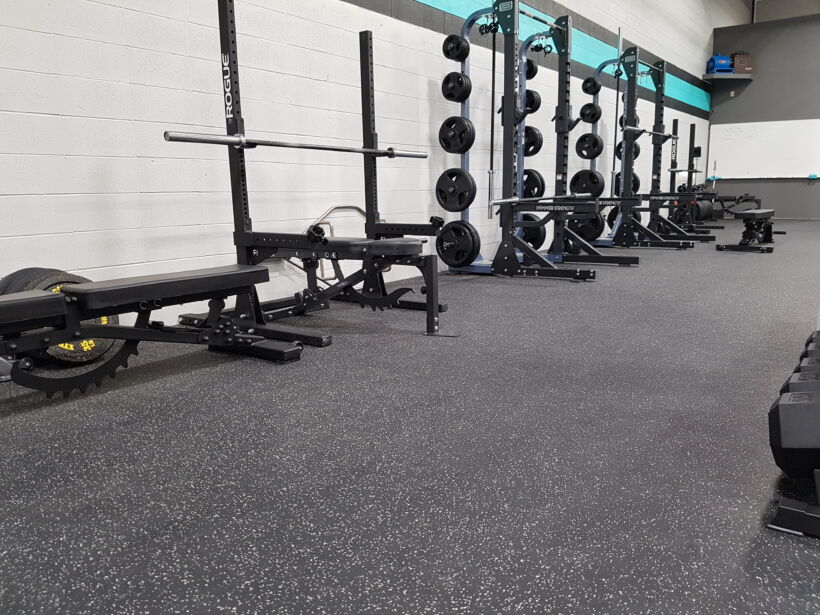Rubber Gym Flooring Pros and Cons
Durability, slip resistance, moisture resistance, eco-friendliness, and ease of installation are some of the benefits of choosing rubber flooring for residential or commercial projects. It is also important to note that your gym’s unique flooring needs will vary depending on the equipment and exercises you plan to include.
If you’re considering rubber flooring for your next gym project, here are a few pros and cons of our gym flooring products to review before making a purchase. If you have further questions, please contact our product specialists to determine which flooring product best suits your fitness needs.

Rubber Gym Flooring Pros
Whether you are a DIY enthusiast or a professional flooring installer, we offer rubber gym tiles, sheets, and rolls for any gym project. Our gym flooring rubber products, such as VersaTREAD rubber gym rolls, VersaRUBBER® gym mats, and GatorSHOCK® high-impact gym tiles, are easy to install, slip-resistant, shock-absorbing, and can withstand low—or high-impact workouts, weight lifting, and workout machines.
Another benefit of our rubber flooring is its ease of cleaning and low maintenance. Many of our rubber gym flooring options are slip-resistant and water-resistant, making them durable enough for fitness facilities. Most importantly, our quality gym products offer shock absorption to protect athletes’ joints and protect your subfloor from the impact of workouts and any fitness equipment placed upon it. Many Perfect Surfaces gym products are manufactured using post-consumer recycled rubber material, so you can feel confident about making the eco-friendly and sustainable choice, keeping this material out of our landfills.

Rubber Gym Flooring Cons
Gym rubber flooring can range from medium-duty to ultra-heavy-duty depending on the size and density of the product, as well as its format (tiles, rolls, or mats). One challenge you may encounter is that rubber gym tiles and mats are a more manageable weight than rubber rolls; you may require extra assistance transporting and installing rubber gym rolls. Additionally, while rubber gym mats and tiles are an easy DIY installation, we recommend hiring a professional installer for VersaTREAD Rubber rolls (especially in large-scale applications) to ensure the best results- for an additional cost. Another disadvantage to rubber flooring may be their limited color options; recycled rubber is typically available in only straight black or black with color speckles- although our EPDM rubber products do offer full-color options. The last drawback that some may encounter is the initial cost of a high-quality rubber over a less expensive gym flooring alternative. Despite the potential higher initial investment of rubber gym flooring, it is important to remember that rubber gym flooring will last far longer (and require less maintenance) than cheaper flooring alternatives, which will demand repair or replacement much earlier, typically justifying the higher upfront cost of rubber.

What is Commonly Used? Rubber Sheets, Rubber Rolls, or Tiles.
Whether you are a novice DIYer or a professional installer, Perfect Surfaces has the right product to make your gym floors come to life. Rubber tiles and rubber mats are popular among home gym DIYers because they can be loose-laid without glue or tape and often require no special tools! Our gym rubber tiles and sheets are great for small spaces and can be removed and replaced easily without damaging the floors.
If you want to cover a large gym surface, we recommend rubber rolls, which are more cost-effective in large spaces. Rubber rolls are generally heavier than rubber tiles and sheets and require additional labor during installation. We recommend professional installation of rubber rolls to glue them to the floor properly. Considering how you intend to use your space when choosing gym flooring will guide you in selecting the best products. Contact our experts at Perfect Surfaces for more advice.

















